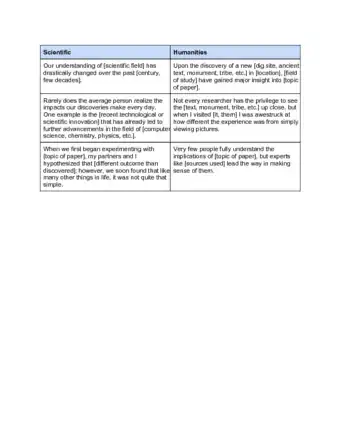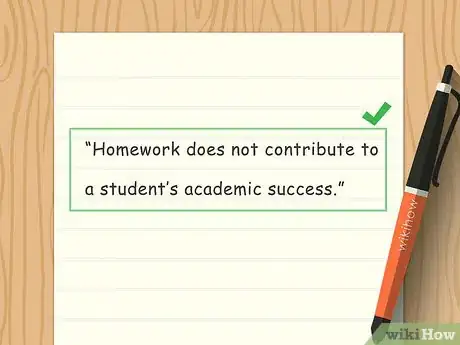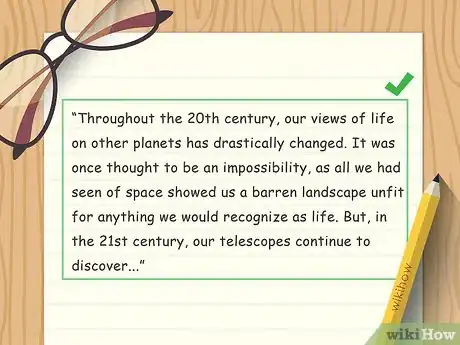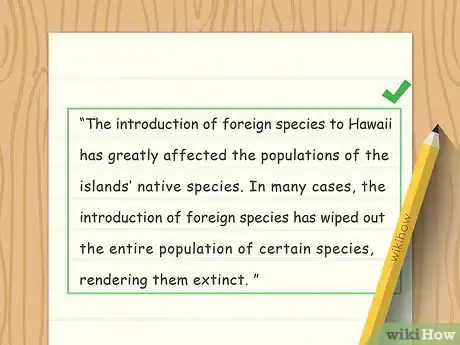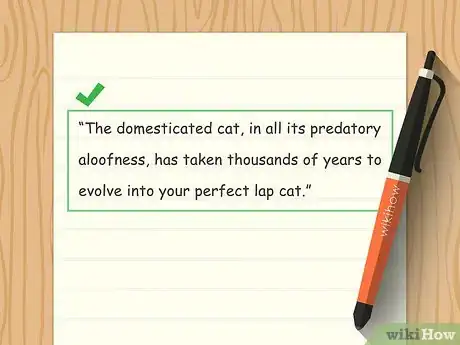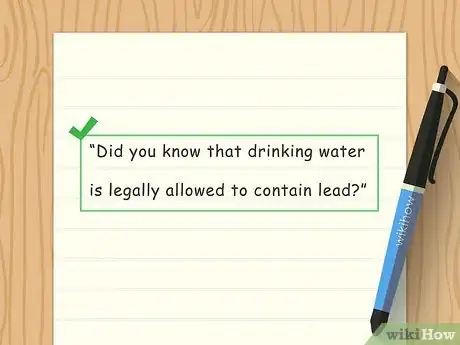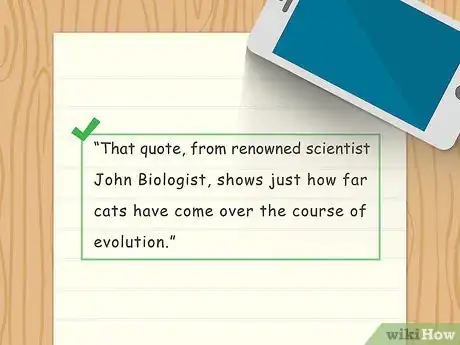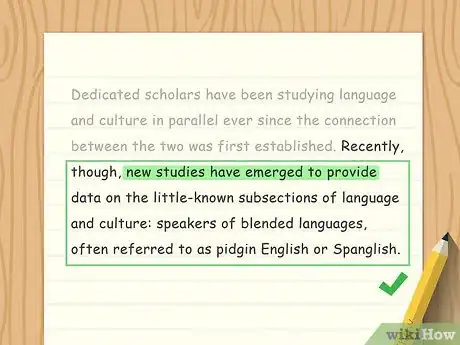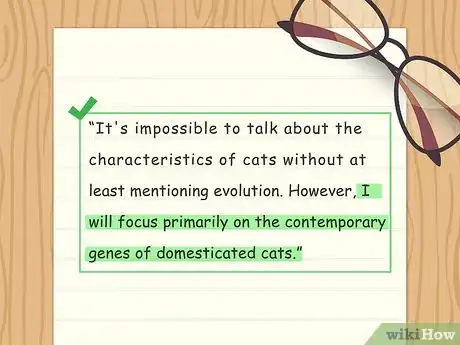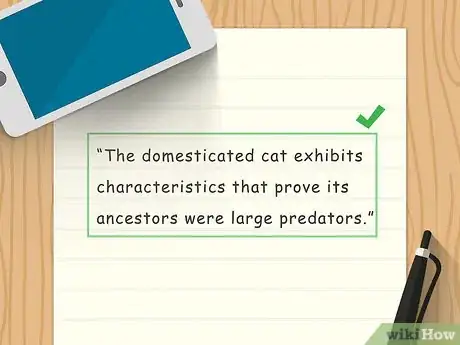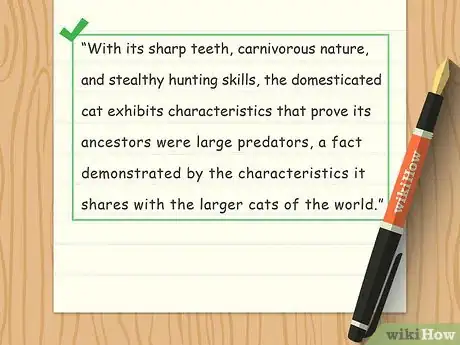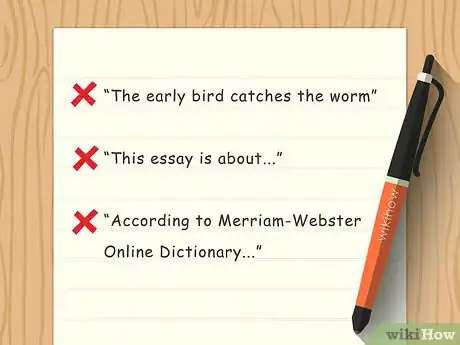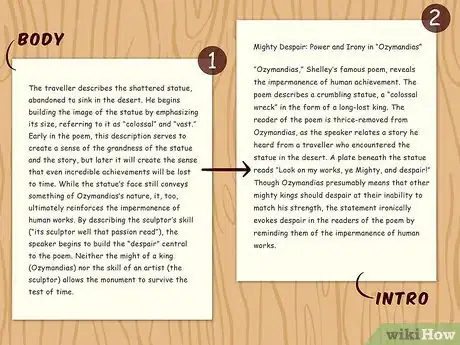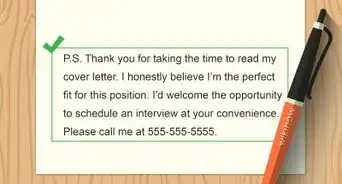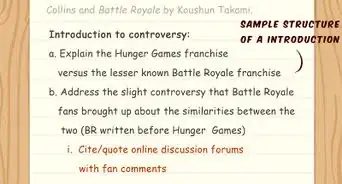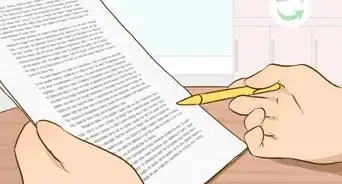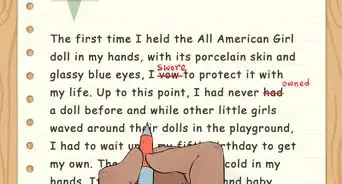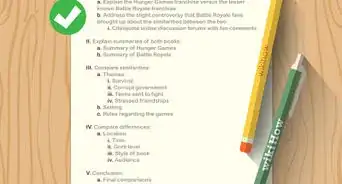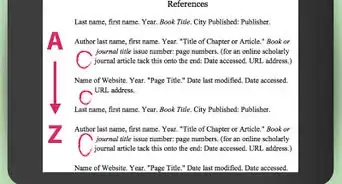This article was co-authored by Jake Adams. Jake Adams is an academic tutor and the owner of Simplifi EDU, a Santa Monica, California based online tutoring business offering learning resources and online tutors for academic subjects K-College, SAT & ACT prep, and college admissions applications. With over 14 years of professional tutoring experience, Jake is dedicated to providing his clients the very best online tutoring experience and access to a network of excellent undergraduate and graduate-level tutors from top colleges all over the nation. Jake holds a BS in International Business and Marketing from Pepperdine University.
There are 7 references cited in this article, which can be found at the bottom of the page.
This article has been viewed 277,248 times.
A well-written introduction lets your reader know what you are going to be writing about. In it, you lay out the scope of your argument or discussion, whether you're writing an essay or a blog post. For a good introduction, begin by hooking the reader with an interesting opening. From there, you'll provide a few transition sentences to get to your main ideas, moving from a broad idea to a more specific one as you go.[1]
Steps
Sample Introductions
Creating a Hook
-
1Begin with a quote to give weight to your argument. This hook works well in both personal writing and academic essays as long as you choose an appropriate quote. For instance, avoid using inspirational quotes in an academic paper, but one may be appropriate for something more personal, such as a blog post.[2]
- Make sure the quote is related to your argument. It should lead into what you're saying in your introduction.
-
2Select a bold statement for a dynamic introduction. A bold statement expresses an opinion in a provocative way. Choose a statement that is original or controversial in some way, as opposed to noting a common fact. Be sure you can support your statement with facts and evidence![3]
- For example, if you’re writing an argumentative essay that is intended to convince school administrator to do away with homework, you could say, “Homework does not contribute to a student’s academic success.”[4]
Advertisement -
3Choose a simple story to illustrate where your writing will go. A short anecdote is a fun way to draw your readers in. However, it must be relevant to your topic, or you'll end up confusing readers. It also shouldn't be more than a paragraph long, particularly if you are writing a short essay or text.
- An anecdote can be fictional or real, but you typically phrase it like you would if you're telling a story to a friend, though you still want to keep it professional.
- For example, you might write, "Once, long ago, a single branch of animals broke off from a group of predators in the chain of evolution. These animals had sharp teeth, were fierce predators, and soon developed a hypercarnivorous nature. Eventually, this chain led to the purring animal you have sitting in your lap: the domesticated house cat."
-
4Write an example for a concrete way to introduce your topic. An example is similar to a story, except it usually comes from real life. Try writing it in a more straightforward style than a story.[5]
- For instance, if you're writing about cat traits, you could share a short example about a trait you witnessed in one of your cats.
-
5Opt for a broad statement for a straightforward approach. Choose a statement that's broad in the sense that you are leading to a more specific main idea. However, it shouldn't be so broad that you confuse the reader.[6]
- For instance, if you're writing about domesticated cat traits, don't start with the evolution of the universe, as that's a bit broad. You could, however, start with a few sentences about how evolution led to the current traits of cats.
- You might write, "The domesticated cat, in all its predatory aloofness, has taken thousands of years to evolve into your perfect lap cat."
-
6Ask a question to get the reader thinking. Choose a thought-provoking question that will grab the reader’s interest and get them thinking about the topic. Avoid restating a question that the topic asks and don’t use a cliché.[7]
- For instance, if you’re writing about water quality in your community, you could begin with a question like, “Did you know that drinking water is legally allowed to contain lead?”
-
7Avoid starting with a definition unless it is truly relevant. This technique has been used so much that it's become trite. Therefore, unless you really need that definition to introduce your topic, it's best to skip it.
Transitioning to the Primary Topic
-
1Provide context to give your hook meaning. This part of the introduction gets you and your reader from the hook to the main idea of your paper or text. Provide some background information on the hook you just used or establish how it relates to your topic.[8]
- For example, if you used a quote, you might say, "That quote, from renowned scientist John Biologist, shows just how far cats have come over the course of evolution."
-
2Narrow your ideas from broad to specific to focus your introduction. Often, your hook is a bit broader than your main idea, which is fine. In this transitional area, use sentences that gradually narrow down your topic until you hit the specific idea you want to discuss.[9]
- For instance, if you started with a story about how cats evolved in an essay on cat traits, you might start narrowing by first discussing what traits they inherited from their ancestors. Then, you can move on to the traits they've developed since branching off from other predators.
-
3Introduce specifics to establish your topic. In these transition sentences, begin adding specifics to give the reader an idea of where you're headed. Use these specific points to move towards your main topic.[10]
- For example, you might write, "It's impossible to talk about the characteristics of cats without at least mentioning evolution. However, I will focus primarily on the contemporary genes of domesticated cats."
- Here, you're letting the reader know that your main idea is genes in domestic cats, so you've gotten more specific. However, you're still moving to your main idea sentence, where you'll specify just what genes you plan to cover.
-
4Provide just enough information to convince people to read your text. Give enough information that your reader is interested in reading your paper and is able to follow along with what you're saying. However, don't give your whole argument, as then the reader doesn't have an incentive to read your paper.[11]
- The introduction helps engage your readers. The trick is finding the right balance between providing enough information to pique their interest, but not giving so much information that you answer every question upfront.
- For instance, you might talk about how you plan on showing how cats evolved to be the perfect predators, but you don't necessarily need to tell them how in the introduction.
Writing Your Main Idea
-
1Establish your topic by using a clear, concise statement. This statement is the main idea for your text. Generally, you write a single sentence to establish your main idea or ideas, and it is the most specific part of your introduction. This sentence should go at the end of your introductory paragraph.[12]
- For instance, if your argument is that domesticated cat traits prove they are direct descendants of larger predators, you might write, "The domesticated cat exhibits characteristics that prove its ancestors were large predators."
-
2Include your main points to give your readers guidance. Part of establishing your argument is giving your readers a preview of what's to come. Establish guideposts, which are specific phrases or sentences that tell the reader exactly what you plan to cover in your text. That way, your reader knows to look for those topics as they read your paper.[13]
- For instance, you could add this to the statement: "With its sharp teeth, carnivorous nature, and stealthy hunting skills, the domesticated cat exhibits characteristics that prove its ancestors were large predators, a fact demonstrated by the characteristics it shares with the larger cats of the world."
- This statement establishes that you're going to focus on those 3 traits and that you plan to show a connection to other members of the feline family.
- In some cases, you might choose not to introduce your main points in the introduction. As long as you explain them in the body of your paper and they relate back to your thesis, this is fine.
-
3Place your main ideas at the end of your introduction. By convention, your main ideas statement provides the transition between your introduction and the rest of your text. Therefore, it goes right before you begin the body of your text. However, if you need to do so, you can include a transition sentence to help your reader understand that you're moving onward.
Creating a More Effective Introduction
-
1Use original phrasing to make your introduction more interesting. It's tempting to use cliches or overused expressions in an introduction, especially if you don't really know what to say. However, you'll start out your essay by boring your reader, which is not a great place to begin.
- Skip phrases or cliches like "A penny saved is a penny earned," or "The early bird catches the worm."
- The exception is if you can explain how the phrase connects to your topic in a unique way or in a way in which the reader would not expect.
- Similarly, skip formulaic introductions, such as "This essay is about...., and here is my thesis:..."
-
2Ensure your introduction is appropriate for the style of text. A very informal introduction is generally not appropriate for an academic essay, particularly a scientific one. On the other hand, a stiff, formal introduction usually doesn't work well in a blog post. As you write your introduction, think about whether it's an appropriate style.
-
3Revisit your introduction after you've finished the text to see if it fits. It's perfectly normal to write your introduction before the rest of your text. However, your argument may change over the course of writing. Therefore, you should give your introduction a read-through to make sure it still introduces the text well.[14]
- Additionally, when your rephrase your thesis in your conclusion, you can check to see if your introduction is still relevant to the text.
- Check the points you mentioned in your introduction that you planned on bringing up in your paper. Did you hit them all?
-
4Write your introduction after the body to make it easier to compose. Sometimes, when you're beginning your text, you may not know exactly all the points you want to make. Plus, if you're like many people, you may find the introduction the hardest part to write. If that's the case, coming back to it later can get you going on the text.
Community Q&A
-
QuestionWhere can I find a sample essay that identifies the thesis statement, supporting paragraphs, concluding paragraphs, and introduction?
 Community AnswerIf you search for "sample essay with parts labeled" on Google, you should be able to find some sample essays (or at least portions of essays) with each part of the essay highlighted. You can also look to grammar- and writing-focused websites to find detailed explanations of each essay part, why it's necessary, how to structure it, and where to put it.
Community AnswerIf you search for "sample essay with parts labeled" on Google, you should be able to find some sample essays (or at least portions of essays) with each part of the essay highlighted. You can also look to grammar- and writing-focused websites to find detailed explanations of each essay part, why it's necessary, how to structure it, and where to put it. -
QuestionHow do I write introduction in a story way?
 Community AnswerCome up with a story that connects with your main idea.
Community AnswerCome up with a story that connects with your main idea.
References
- ↑ Jake Adams. Academic Tutor & Test Prep Specialist. Expert Interview. 20 May 2020.
- ↑ http://writingcenter.unc.edu/tips-and-tools/introductions/
- ↑ https://www.grammarly.com/blog/how-to-write-an-introduction/
- ↑ https://today.duke.edu/2006/09/homework_oped.html
- ↑ http://writingcenter.unc.edu/tips-and-tools/introductions/
- ↑ https://writingcenter.uagc.edu/introductions-conclusions
- ↑ https://www.grammarly.com/blog/how-to-write-an-introduction/
- ↑ Jake Adams. Academic Tutor & Test Prep Specialist. Expert Interview. 20 May 2020.
- ↑ https://writingcenter.uagc.edu/introductions-conclusions
- ↑ Jake Adams. Academic Tutor & Test Prep Specialist. Expert Interview. 20 May 2020.
- ↑ https://advice.writing.utoronto.ca/planning/intros-and-conclusions/
- ↑ Jake Adams. Academic Tutor & Test Prep Specialist. Expert Interview. 20 May 2020.
- ↑ https://writingcenter.uagc.edu/introductions-conclusions
- ↑ https://www.grammarly.com/blog/how-to-write-an-introduction/
About This Article
To write an introduction, start with a question, a bold statement, a quote, or a simple story to grab your audience’s attention and give them a hint of what’s to come. Then, provide some context for your opening hook, and talk about how it relates to your primary topic. Next, take a few sentences to narrow your topic and focus on the specifics of what you’re planning to discuss. Try to provide enough information to get your reader interested in your paper, but be careful not to give away your entire argument or conclusion. You want your reader to want to read on! For tips from our Education reviewer on how to move from your introduction to your main idea, scroll down!



